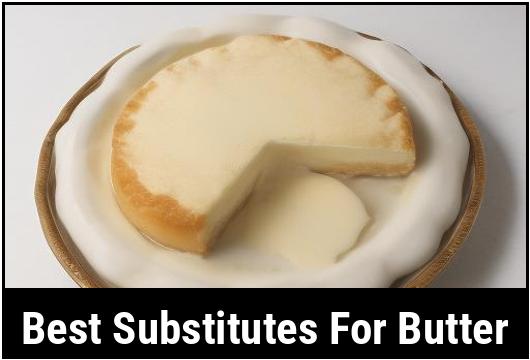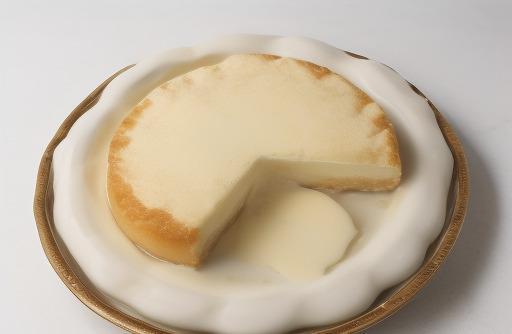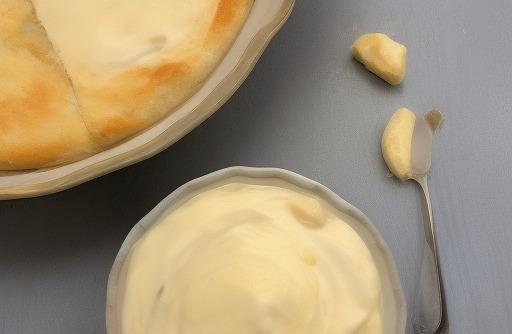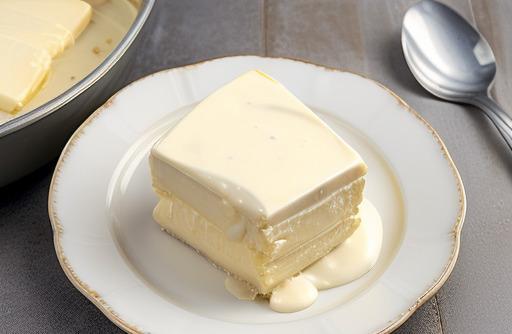- You are here:
- Home »
- Food Substitutes
- » Best Substitutes For Butter
Best Substitutes For Butter

Butter is a common ingredient in many recipes, adding richness, flavour, and texture to dishes. However, there are various reasons why you might need to find a substitute for butter. Whether you’re looking for a plant-based alternative, trying to reduce your saturated fat intake, or dealing with a butter allergy or intolerance, it’s important to know that there are numerous options available to suit your needs.
In this article, we will explore the best substitutes for butter, taking into consideration their taste, texture, and versatility in cooking and baking. We will also discuss how to choose the right substitute and provide some delicious recipes to inspire your culinary endeavors.
Key Takeaways
- Butter substitutes can be used in recipes for various reasons such as vegan or dairy-free diets, health concerns, or personal preference.
- There are several types of substitutes for butter, including plant-based oils, spreads, nut butters, and dairy-free margarine.
- When choosing a substitute, consider its taste, texture, and suitability for the specific recipe.
- Cooking with butter substitutes may require adjustments to the recipe, including temperature, cooking time, and ingredient proportions.
- Experimenting with different substitutes and recipes can lead to delicious culinary creations.
Why You Need A Substitute For Butter
There are several reasons why you might need to find a substitute for butter. Here are some common scenarios:
Vegan Or Dairy-Free Diet
For those following a vegan or dairy-free diet, butter, which is made from cow’s milk, is off-limits. However, there are various plant-based alternatives that can provide similar texture and flavour, making it possible to enjoy the same indulgence without animal products.
Health Concerns
Butter is high in saturated fat, which has been linked to an increased risk of heart disease. If you’re watching your saturated fat intake, replacing butter with a healthier alternative can be beneficial for your overall health.
Butter Allergy Or Intolerance
Some individuals may be allergic or intolerant to the proteins or lactose found in butter. In such cases, substituting butter with an alternative can ensure that these individuals can still enjoy their favourite dishes without experiencing adverse reactions.
Personal Preference
Finally, you may simply prefer the taste of a substitute for butter. Whether it’s the nutty flavour of almond butter or the tanginess of olive oil, exploring different alternatives can add an exciting twist to your cooking and baking repertoire.
Types Of Substitutes For Butter

When it comes to finding a substitute for butter, there are several options to choose from. Let’s explore the most popular types of butter alternatives:
Plant-Based Oils
Plant-based oils are versatile substitutes for butter in both cooking and baking. They add moisture to recipes and contribute to a tender texture. Here are some commonly used plant-based oils:
-
Olive oil: Extra virgin olive oil is an excellent option for sautéing, roasting, and baking. It has a rich, fruity flavour that can enhance the taste of many dishes. However, bear in mind that its strong flavour may not be suitable for all recipes.
-
Coconut oil: Coconut oil is solid at room temperature, making it a great substitute for butter in recipes that require a solid fat. It adds a subtle coconut taste to the dish and works well in both sweet and savory applications. However, coconut oil does have a distinct aroma that may not be ideal for all recipes.
-
Avocado oil: Avocado oil has a mild, buttery taste and a high smoke point, which makes it suitable for high-temperature cooking methods such as frying or grilling. It is a rich source of healthy fats and can add a creamy texture to recipes.
-
Canola oil: Canola oil is a neutral-tasting oil that works well as a substitute for butter in recipes where you don’t want the oil to alter the flavor. It is also lower in saturated fat compared to other oils, making it a healthier choice.
Spreads
-
Margarine: Margarine is a spread made primarily from vegetable oils. Look for a dairy-free margarine if you’re avoiding dairy. It has a similar texture to butter and can be used as a 1:1 substitute in most recipes. However, keep in mind that margarine may contain additives and trans fats, so choose a brand with fewer additives and a lower trans fat content.
-
Ghee: Ghee is a form of clarified butter that is often used in Indian cuisine. It has a rich, nutty flavor and a higher smoke point than butter, making it suitable for high-heat cooking. Ghee is mostly free from lactose and casein, making it a potential option for those with lactose intolerance or milk allergies.
Nut Butters
-
Almond butter: Almond butter is a creamy, plant-based alternative that can be used as a spread or in baking recipes. It has a slightly sweet, nutty taste that adds depth of flavor to dishes. Almond butter is rich in healthy fats and protein, making it a nutritious substitute for butter.
-
Cashew butter: Cashew butter is another delicious substitute for butter. It has a creamy texture, mild taste, and works well in sweet and savory recipes. Cashews are also a good source of vitamins and minerals, making cashew butter a healthy choice.
-
Peanut butter: Peanut butter is a classic option and a pantry staple for many. It has a rich, nutty flavor and can be used as a spread or in recipes. However, peanut butter has a distinct taste that may not work well in all dishes, so choose it accordingly.
Dairy-Free Margarine
Dairy-free margarine is specifically formulated to mimic the taste and texture of butter without any dairy ingredients. It is a popular option for those with dairy allergies or intolerances and can often be used as a direct substitute for butter in recipes.
Best Substitutes For Butter

Now that we have explored the different types of butter substitutes, let’s dive into the best options available:
-
Extra Virgin Olive Oil: Olive oil is a versatile option that works well in both cooking and baking. Its rich, fruity flavor adds depth to dishes, making it an excellent substitute for butter in savory recipes. When using olive oil in baking, opt for recipes that already have a strong flavor profile to complement the oil’s taste.
-
Coconut Oil: Coconut oil is a solid fat at room temperature, making it a perfect substitute for butter in recipes that require a solid fat, such as pie crusts or cookies. Its subtle coconut taste can add a delightful tropical twist to baked goods.
-
Cashew Butter: Cashew butter has a creamy texture and mild taste that closely resembles butter. It is an excellent option for spreading on toast or adding to sauces and dressings. When using cashew butter as a substitute in baking, consider recipes that pair well with its nutty flavor.
-
Dairy-Free Margarine: Dairy-free margarine is a convenient and reliable option for those with dairy allergies or intolerances. It has a similar texture and taste to butter, making it a seamless substitute in most recipes.
-
Avocado Oil: Avocado oil is a versatile oil that works well in cooking and baking. Its mild, buttery taste adds richness to dishes without overwhelming the other flavors. It can be used as a replacement for butter in recipes such as muffins or quick bread.
It’s important to note that the taste and texture of these substitutes may differ slightly from butter, so some experimentation may be needed to find the perfect match for your recipes.
Pro Tip: When using a substitute for butter in baking, consider adding a bit of extra liquid to compensate for the moisture content lost by omitting butter. This will help maintain the desired texture and prevent dryness.
Choosing The Right Substitute For Butter

When choosing a substitute for butter, consider the following factors:
-
Taste: The taste of the substitute should complement the flavors in your recipe. Consider the flavor profile of each option and choose one that harmonizes well with the other ingredients.
-
Texture: Consider the texture you want to achieve in your recipe. Some substitutes, like coconut oil or margarine, have a similar texture to butter when solid, while others, like oils, will contribute a different texture.
-
Cooking Temperature: Consider the cooking temperature required for your recipe. Some substitutes have lower smoke points than butter, so if you’re using them for high-heat cooking, make sure they can withstand the heat without burning.
-
Health Considerations: Choose a substitute that aligns with your dietary needs and health goals. For example, if you’re looking to reduce saturated fat intake, opt for a low-fat or plant-based alternative.
-
Availability and Cost: Consider the availability and cost of the substitute. Some options may be easier to find or more budget-friendly than others.
Keep in mind that each substitute has its own unique characteristics, and while they can work well in many recipes, some trial and error may be necessary to find the perfect substitute for a specific dish.
Cooking With Substitutes For Butter

Cooking with substitutes for butter may require some adjustments to your traditional approach. Here are some tips to ensure success in the kitchen:
-
Measurements: When substituting butter with oils, use a 1:1 ratio. For solid fats like coconut oil, use the same amount of solid fat as called for in the recipe.
-
Texture: Remember that the texture of the final dish may vary when using substitutes. For example, cookies made with coconut oil might spread more than those made with butter. Adjustments to the recipe, such as chilling the dough or adding a small amount of flour, may be necessary to achieve the desired texture.
-
Temperature: Some substitutes have lower smoke points than butter, so adjust cooking temperatures accordingly. For example, when sautéing with olive oil, use medium heat rather than high heat to prevent the oil from smoking.
-
Baking: If using a substitute in baking, consider the moisture content. Adding a bit of extra liquid, such as milk or water, can help prevent dryness and maintain the desired texture.
-
Flavor Changes: Keep in mind that substitutes may alter the flavor of the dish. Consider how the taste of the substitute will interact with the other ingredients in the recipe. Start with small quantities to gauge the flavor impact and adjust as needed.
Remember, cooking is an art, and experimentation with different substitutes and recipes is key to finding what works best for you.
Recipes Using Substitutes For Butter

Now, let’s explore some delicious recipes that showcase the versatility of butter substitutes:
Vegan Chocolate Chip Cookies
Ingredients:
- 2 cups all-purpose flour
- 1 teaspoon baking powder
- 1/2 teaspoon salt
- 1/2 cup dairy-free margarine, softened
- 1/4 cup coconut oil, melted
- 1 cup brown sugar
- 1/2 cup granulated sugar
- 1/4 cup unsweetened applesauce
- 1 teaspoon vanilla extract
- 1 1/2 cups dairy-free chocolate chips
Instructions:
- Preheat the oven to 350°F (175°C).
- In a medium bowl, whisk together the flour, baking powder, and salt.
- In a large bowl, cream together the dairy-free margarine, coconut oil, brown sugar, and granulated sugar until light and fluffy.
- Add the applesauce and vanilla extract to the margarine mixture and mix well.
- Gradually add the dry ingredients into the wet ingredients and mix until fully combined.
- Fold in the dairy-free chocolate chips.
- Drop rounded tablespoons of dough onto a baking sheet lined with parchment paper, spacing them about 2 inches apart.
- Bake for 10-12 minutes or until the edges are golden brown.
- Allow the cookies to cool on the baking sheet for a few minutes, then transfer them to a wire rack to cool completely.
Roasted Garlic And Rosemary Mashed Potatoes
Ingredients:
- 2 1/2 pounds potatoes, peeled and cut into chunks
- 4 cloves garlic, peeled
- 1/4 cup olive oil
- 1/4 cup dairy-free margarine
- 1/2 cup unsweetened almond milk, warmed
- 1 tablespoon fresh rosemary leaves, minced
- Salt and pepper, to taste
Instructions:
- Preheat the oven to 400°F (200°C).
- Place the garlic cloves in a small piece of aluminum foil, drizzle with olive oil, and wrap tightly. Place the foil packet on a baking sheet and roast in the preheated oven for 20-25 minutes or until the garlic is softened and fragrant.
- While the garlic is roasting, bring a large pot of salted water to a boil. Add the potato chunks and cook until tender, about 15-20 minutes.
- Drain the potatoes and return them to the pot. Mash the potatoes using a potato masher or a hand mixer.
- Remove the roasted garlic from the foil packet and mash it into a paste using a fork.
- Stir the roasted garlic paste, olive oil, dairy-free margarine, and warmed almond milk into the mashed potatoes.
- Add the minced rosemary leaves and season with salt and pepper to taste. Mix well.
- Serve the mashed potatoes hot, garnished with additional rosemary leaves if desired.
These recipes showcase how butter substitutes can be seamlessly incorporated into various dishes, providing a different but equally delicious result.
Storage And Shelf Life Of Substitutes

Understanding how to store butter substitutes properly is important to ensure their longevity and quality. Here are some general guidelines:
-
Plant-Based Oils: Store plant-based oils in a cool, dark place away from direct sunlight and heat sources. Most oils have a shelf life of up to one year, but some, like extra virgin olive oil, are best used within six months for optimal flavor.
-
Spreads: Dairy-free margarine and ghee should be stored in the refrigerator to maintain their freshness. They typically have a shelf life of several weeks or more, depending on the brand and ingredients.
-
Nut Butters: Store nut butters in a cool, dry place, away from sunlight and heat sources. They can be stored either in the pantry or refrigerator, depending on your preference. Once opened, nut butters generally last for several months, but refrigeration can help extend their shelf life.
-
Dairy-Free Margarine: Follow the manufacturer’s instructions for storage. Dairy-free margarine is typically stored in the refrigerator and can last for several weeks or more.
Always check the product labels for specific storage instructions and recommended shelf life.
Conclusion
Finding a substitute for butter is easy with the variety of options available. Whether you’re following a vegan diet, have specific health concerns, or simply prefer a different taste, there is a substitute out there for you. By considering factors such as taste, texture, cooking temperature, and health considerations, you can choose the best alternative for your specific needs.
Experiment with different substitutes and recipes to discover new flavors and culinary possibilities. With a bit of creativity and a willingness to try new things, you can enjoy the same indulgence and deliciousness that butter brings, but with a unique twist.
FAQS
What Are Some Healthy Alternatives To Butter?
Some of the best substitutes for butter include olive oil, avocado, nut butters, Greek yogurt, and applesauce. These options are low in saturated fat and high in nutrients, making them a healthier choice for cooking and baking.
Is Margarine A Good Substitute For Butter?
Margarine is often marketed as a healthier alternative to butter, but it may not be the best option. Many margarines contain trans fats, which can raise cholesterol levels and increase the risk of heart disease. Instead, choose a plant-based spread made with healthy oils like olive, coconut, or canola.
What Can I Use In Place Of Butter For Baking?
For baking, you can substitute butter with ingredients like applesauce, mashed bananas, coconut oil, or Greek yogurt. These options provide moisture and flavor to baked goods without adding extra fat and calories.
Can I Use Ghee As A Substitute For Butter?
Yes, ghee can be used as a substitute for butter in many recipes. Ghee is clarified butter that has been simmered to remove milk solids and water, leaving behind pure fat. It has a nutty, rich flavor and can be used in cooking and baking like regular butter.
Are There Any Non-dairy Substitutes For Butter?
Yes, there are several non-dairy alternatives to butter that can be used for cooking and baking. These include coconut oil, avocado oil, nut butters, vegan butter, and plant-based spreads made with ingredients like soy or almond milk. It’s important to read labels carefully to ensure these products don’t contain added sugars or other unhealthy ingredients.
Sources
About the Author Jenny
I'm Jenny, a housewife with an unwavering passion for food. My culinary journey began with my grandmother's kitchen, and it's now a full-fledged food blog. I've turned my love for cooking into a creative outlet, sharing recipes and stories with a global community of fellow food enthusiasts. It's proof that being a housewife can also mean pursuing your passions and savoring life's delectable moments.
